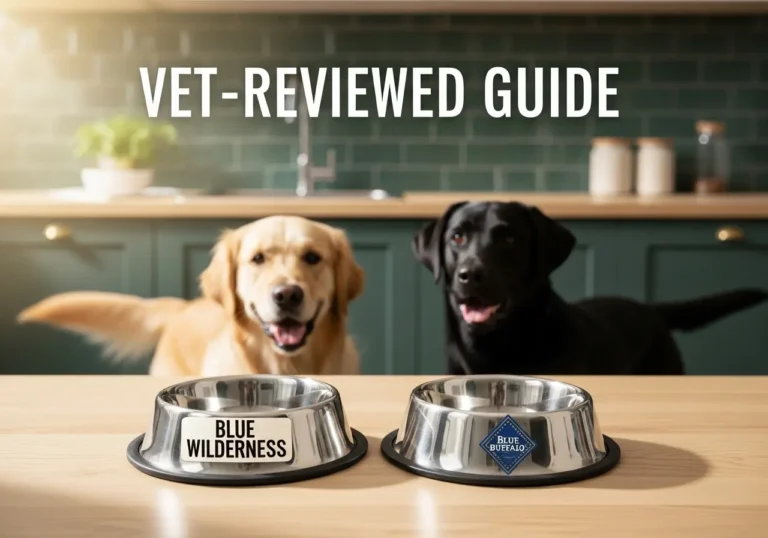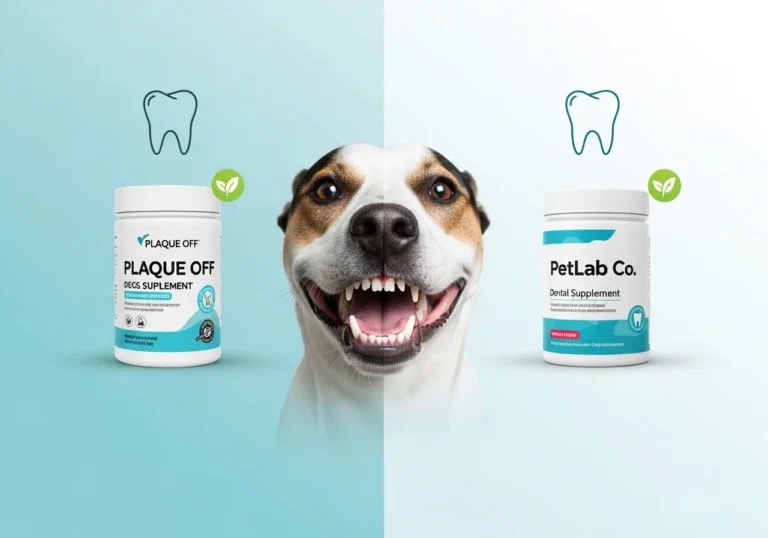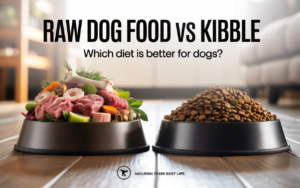As a devoted dog owner, you’ve probably walked down the pet store aisle and seen them: those golden-brown, curly, and undeniably tempting pig ears. My dog, a relentless chewer, goes wild for anything that promises a good, long gnaw session. Seeing pig ears marketed everywhere as “all-natural” and “single-ingredient,” I was tempted. They look like a simple, satisfying treat straight from the farm. But a nagging question stopped me from adding them to my cart: Are they actually safe?
This question is more common than you might think. The U.S. pet treat market soared past $1.2 billion in 2024, with classic chews like pig ears remaining a top seller. Yet, headlines about recalls, bacterial contamination, and digestive issues have created a cloud of uncertainty. Pet parents are caught in a tough spot, trying to balance the appeal of a “natural” treat with the potential risks to their furry family members. How do you know if you’re giving your dog a healthy snack or a hidden hazard?
Don’t worry, you’ve come to the right place. This is your definitive, vet-reviewed guide to understanding pig ears for dogs. We’ll break down the pros and cons, explore the real risks behind the recalls, and explain how to offer them safely, if you choose to. More importantly, we’ll introduce you to some of the best and safest chew alternatives on the market to keep your dog’s teeth clean and their tail wagging. Let’s dig in and find the right chewing solution for your best friend.
The Truth About Pig Ears: What Every Owner Should Know
Before deciding if pig ears are right for your dog, it’s essential to understand what they are, their nutritional content, and the benefits and risks they carry.
What Exactly Is a Pig Ear Chew?
A pig ear is precisely what it sounds like: the external ear flap (pinna) of a pig. These chews are made of cartilage and skin, which are cleaned, then cooked and dried through processes like baking or smoking. They are often sold as a single-ingredient, “natural” treat, which is a major part of their appeal. Because they aren’t processed with artificial additives, chemicals, or preservatives (when sourced correctly), they seem like a wholesome option.
From a nutritional standpoint, pig ears are high in protein and fat. On average, a single pig ear contains:
- Protein: Around 70%
- Fat: Between 25-30%
- Calories: Can range from 150 to over 250 per ear, depending on size.
While the high protein content is a plus, the high fat level is a significant concern for many dogs. These numbers are a good starting point, but the real question is how they translate into health benefits and risks.
Potential Benefits:
- Mental Stimulation: Chewing is a natural, instinctual behavior for dogs. A long-lasting chew like a pig ear can keep them occupied, reducing boredom, anxiety, and destructive behaviors.
- Dental Scraping: The abrasive action of chewing on a tough treat can help scrape away soft plaque and tartar from a dog’s teeth.
- Satisfies Chewing Instinct: It provides an appropriate outlet for a dog’s innate need to chew.
Potential Risks:
- High Calorie and Fat Content: This can lead to weight gain and is a major risk factor for pancreatitis, a painful and potentially fatal inflammation of the pancreas.
- Choking Hazard: If a dog bites off a large piece, it can become lodged in the throat or digestive tract.
- Bacterial Contamination: Pig ears have been notoriously linked to Salmonella outbreaks. The 2019 multi-state recall is a stark reminder of this risk.
- Digestive Upset: The high-fat content can cause vomiting or diarrhea in dogs with sensitive stomachs.
As veterinarian Dr. Marty Becker, DVM, puts it, “Pig ears can be safe for some dogs in moderation, but hygiene, size, and sourcing matter.”
Are the Benefits Worth the Risks? A Deeper Look
Let’s break down the benefits versus the risks to help you make an informed decision.
✅ Benefits:
- Chewing Satisfaction: There’s no doubt that most dogs find pig ears delicious and satisfying. The texture and flavor are a powerful motivator, making them a high-value treat that can keep a dog engaged for a good while.
- Gentle Dental Abrasion: For dogs with healthy teeth, the chewing action can help reduce the buildup of soft plaque. It’s a good supplement to regular brushing and professional cleanings, but not a replacement.
- “All-Natural” Appeal: When sourced from reputable, U.S.-based manufacturers, pig ears are free from the artificial ingredients found in many other commercial treats.
⚠️ Risks:
- Serious Choking Hazard: This is especially true for “gulpers”—dogs that swallow food without much chewing. Small or toy breeds are also at a higher risk, as a piece can easily obstruct their smaller airways or intestines.
- Pancreatitis and Obesity: The high-fat content is a major red flag. For dogs that are overweight, prone to pancreatitis, or have other metabolic conditions, a pig ear is a very risky choice.
- Salmonella Contamination: The FDA’s 2019 recall linked pig ear treats to a Salmonella outbreak that sickened 154 people in 35 states. The bacteria can affect not only the dog but also any human who handles the treat or interacts with the dog.
- Digestibility Issues: The tough, greasy nature of a pig ear can be hard on a dog’s digestive system, leading to vomiting, diarrhea, or constipation.
- Tooth Fractures: While softer than bone, a very hard, over-dried pig ear can still pose a risk of fracturing teeth, especially in senior dogs or those with existing dental problems.
Breed-Specific and Life-Stage Considerations
- Small/Toy Breeds: The choking risk is significantly higher. A whole pig ear is often too large, and pieces can easily become hazards.
- Senior Dogs: Brittle teeth are more susceptible to fractures. The high-fat content can also be harder for their aging digestive systems to handle.
- Puppies: Puppies have delicate developing teeth and sensitive stomachs. Safer alternatives like Nylabone Puppy Chews or a KONG Puppy toy filled with puppy-safe treats are much better options.
Here’s a simple chart to visualize the comparison:
Factor | Benefit | Risk |
|---|---|---|
Chewing Satisfaction | ✅ High | – |
Dental Support | ✅ Limited | ⚠️ Potential for tooth fracture |
Fat Content | ❌ None | ⚠️ High (Risk of pancreatitis/obesity) |
Safety | ❌ Low | ⚠️ High (Choking & bacterial risk) |
How Can I Feed Pig Ears Safely?
If you decide that a pig ear is an occasional treat you want to offer, you must follow strict safety guidelines to minimize the risks.
- Always Supervise: Never leave your dog alone with a pig ear. Watch them closely to ensure they are chewing and not trying to swallow large pieces.
- Choose High-Quality Products: Only buy pig ears made in the USA from reputable brands. Look for products that are heat-treated or irradiated to kill bacteria.
- Practice Strict Moderation: Do not make pig ears a daily snack. For a healthy, medium-to-large dog, limit them to one or two per week at most.
- Practice Good Hygiene: Wash your hands thoroughly with soap and water after handling a pig ear. Wash your dog’s bowl and the area where they ate the treat as well.
- Know When to Take It Away: Once the pig ear is chewed down to a size small enough to be swallowed whole, take it away to prevent choking.
💡 Tip: Some owners freeze pig ears before giving them to their dog. While this may help kill some residual bacteria and make the treat last longer, it also makes it harder, increasing the risk of a tooth fracture.
⚠️ Warning: Never feed pig ears to puppies under 6 months old, dogs with a history of pancreatitis, or dogs that are overweight. Consult your veterinarian first.
Safe Chews & Vet-Approved Alternatives
Given the risks, many owners look for safer alternatives. We’ve selected some of the best chew treats and toys on the market based on safety, digestibility, sourcing, and positive veterinary reviews.
Transparency Note: TailWaves may earn a small affiliate commission from the links below at no extra cost to you. This helps us continue providing free, high-quality pet health information.
Top Recommendations for Safe Chewing
Product #1 – Barkworthies Natural Pig Ears
- Best For: Healthy medium to large dogs whose owners want to offer a real pig ear occasionally.
- Pros: This is a single-ingredient chew made from U.S.-sourced pigs. Barkworthies slow-roasts its ears to lock in flavor and ensure a high-quality product. They are a well-regarded brand in the natural chew space.
- Cons: They are still greasy and high in fat. Not suitable for overweight dogs or those with sensitive stomachs. All safety rules for pig ears still apply.
Product #2 – Redbarn Pig Snouts

- Best For: Dogs prone to digestive issues or those needing a smaller portion.
- Pros: While not an ear, a pig snout offers a similar chewing experience with a lower fat content. They are puffed during the cooking process, making them lighter and easier to digest. They can be broken into smaller pieces for portion control.
- Cons: They are less durable than a full pig ear and won’t last as long for an aggressive chewer
- 👉[Check Price on Chewy]
Product #3 – Whimzees Natural Dental Chews (Alternative)

- Best For: All dogs, especially those with sensitive stomachs, allergies, or small mouths.
- Pros: Whimzees are fully digestible, plant-based chews. They are approved by the Veterinary Oral Health Council (VOHC) for controlling plaque and tartar. They are low-calorie, low-fat, and come in various fun shapes and sizes.
- Cons: They are more expensive per chew than a pig ear and may not last as long with power chewers.
- 👉 [Check Price on Amazon]
Product #4 – Benebone Wishbone Durable Dog Chew Toy

- Best For: Aggressive chewers that need a long-lasting, safe option.
- Pros: Benebones are incredibly durable nylon chew toys flavored with real ingredients like bacon, chicken, or peanuts. They are designed for safety, with a shape that’s easy for dogs to grip. They satisfy the urge to chew without adding any calories.
- Cons: It is a non-edible toy. You must supervise your dog to ensure they are gnawing and not ingesting large pieces. It needs to be replaced when it shows significant wear.
- 👉 [Check Price on Amazon]
Comparison Summary
Product | Type | Edible? | Fat Level | Ideal For |
|---|---|---|---|---|
Barkworthies Pig Ear | Natural Chew | ✅ | High | Healthy Medium/Large Dogs |
Redbarn Pig Snout | Natural Chew | ✅ | Moderate | Digestive Sensitivity |
Whimzees Dental Chew | Dental Chew | ✅ | Low | All Dogs, especially small or sensitive ones |
Benebone Chew Toy | Nylon Toy | ❌ | – | Aggressive Chewers |
The Verdict: Pig ears can be an acceptable occasional treat for healthy, adult dogs when sourced carefully and given under strict supervision. However, for regular chewing, safer, lower-fat, and more digestible alternatives like Whimzees or durable non-edible toys like Benebone offer better long-term health and safety benefits.
Advanced Tips & Expert Insights for Safe Chewing
Keeping your dog safe goes beyond just choosing the right chew. It’s about building a smart and sustainable chewing routine.
🦴 Vet Note: “Moderation is key. Chews and treats should only make up 10% of your dog’s daily caloric intake. Too many pig ears, or any high-fat treat, can unbalance their diet and lead to weight gain or serious GI upset.”
💡 Tip: Rotate your dog’s chews to keep them interested and to provide varied benefits. Use a high-value pig ear as a special monthly reward, a daily dental chew like a Whimzees for tooth maintenance, and a durable Benebone for everyday boredom-busting.
⚠️ Warning: Always discard any chew once it becomes small enough for your dog to swallow. This is the point where it transitions from a fun treat to a major choking or obstruction risk.
What are some other safe alternatives for different needs?
- For Teething Puppies: A KONG Puppy Toy filled with frozen plain yogurt or a Nylabone Gentle Chew is perfect for soothing sore gums without risking damage to their developing teeth.
- For Heavy Chewers: Besides Benebone, consider Himalayan Yak Chews. These are hard cheese chews that are long-lasting and digestible. Ensure you get the appropriate size for your dog.
- For Superior Dental Care: Look for chews with the VOHC (Veterinary Oral Health Council) Seal of Acceptance. Whimzees and Greenies are two popular VOHC-approved options clinically proven to reduce plaque and tartar.
Frequently Asked Questions (FAQs)
Here are answers to the most common questions pet owners have about pig ears.
Are pig ears safe for puppies?
No, pig ears are not recommended for puppies. Puppies have delicate digestive systems that can be easily upset by the high-fat content. Their developing teeth are also more prone to fracture. Furthermore, puppies are notorious for swallowing things they shouldn’t, making the choking risk too high. Stick to puppy-specific chews.
Can pig ears cause diarrhea?
Yes, they can. The high-fat content is a common cause of digestive upset, including diarrhea and vomiting, especially in dogs that aren’t used to such rich treats or those with sensitive stomachs.
How often can I give my dog a pig ear?
For a healthy, adult dog with no history of pancreatitis or weight issues, a pig ear should be considered a very special treat—no more than one or two per week. For many dogs, once or twice a month is a safer frequency.
Are pig ears good for cleaning teeth?
They can provide some mechanical scraping action to help remove soft plaque from the tooth surface. However, they are not a substitute for daily brushing or VOHC-approved dental chews, which are specifically designed and proven to support oral health. The high-fat content and other risks often outweigh the limited dental benefits.
Can pig ears make dogs sick?
Yes. Aside from digestive upset, the biggest risk is bacterial contamination, primarily with Salmonella. This can cause severe illness in dogs and can also be transmitted to humans in the household. Symptoms of Salmonella infection in dogs include fever, lethargy, diarrhea (often bloody), and vomiting.
What is the best alternative to pig ears?
The “best” alternative depends on your dog’s needs. For dental health, a VOHC-approved chew like Whimzees is top-tier. for aggressive chewers, a durable nylon toy like a Benebone is a safe, calorie-free option. For a more natural but safer edible chew, options like beef cheek rolls, bully sticks from reputable brands, or fish skins are great choices.
Final Thoughts: A Balanced Approach to Chewing
So, are pig ears good for dogs? The answer isn’t a simple yes or no. They are not inherently toxic, but they come with significant risks that cannot be ignored. The high fat content, choking potential, and history of bacterial contamination mean they are not the right choice for every dog.
For most dogs, especially puppies, seniors, and those with health issues, the risks far outweigh the benefits. Safer, healthier, and more effective options are readily available to satisfy your dog’s chewing instincts without compromising their well-being.
Always consult your veterinarian before introducing a new, rich treat into your dog’s diet. They can help you assess your dog’s specific health needs and recommend the safest options. By prioritizing supervision, moderation, and high-quality sourcing, you can make the best choices for your four-legged friend.
If you’re searching for safer chew alternatives, check our best teething bones for puppies guide.











1 Comment
Comments are closed.